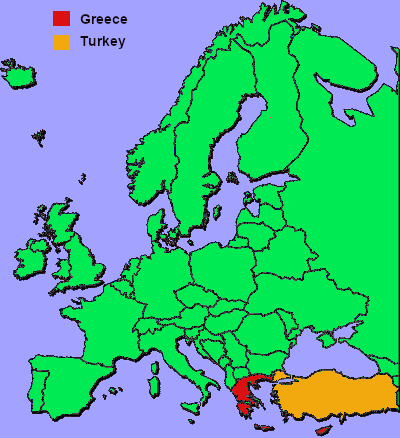
Circle the area on this map

B. The Aegean Sea covers about 83,000 square miles between Greece and Turkey, serving as a key route between Europe and Western Asia for thousands of years. Like the Adriatic, it is a section of the Mediterranean Sea, which is part of the Atlantic Ocean. The Andaman and Arabian seas are part of the Indian Ocean.
D. Athens is the capital and largest city of Greece. It also is one of the world’s oldest cities, with a recorded history of more than 3,400 years. Athens, Algeria’s capital Algiers, Jordan’s capital Amman and Turkey’s capital Ankara were all once ruled by the Turkish Ottoman Empire.
A. Smoke from the unprecedented wildfires in the Russia’s far eastern Siberia region has reached the North Pole. Climate change has warmed Arctic regions like Siberia far faster than other parts of the world. Temperatures have gone as high as 100 degrees in recent years as the permanently frozen ground thaws, releasing more greenhouse gasses.
D. At least 200 people died in Western Germany and Europe as heavy flooding wiped out towns and villages. As the atmosphere warms with climate change, it can hold more moisture, which means that when rain clouds break, more rain is released. In China, a year’s rainfall was dumped in just three days.